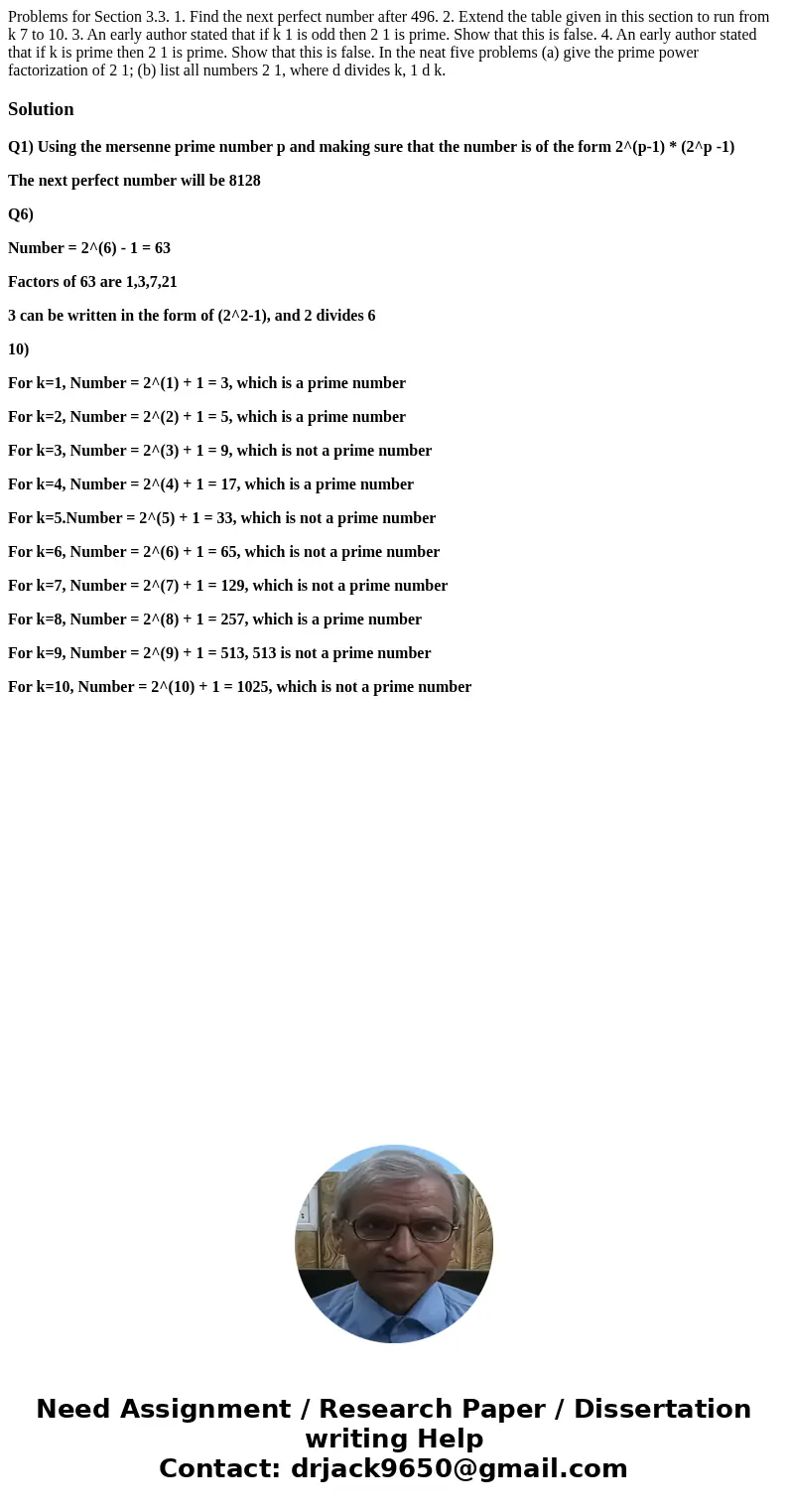Problems for Section 33 1 Find the next perfect number after
Solution
Q1) Using the mersenne prime number p and making sure that the number is of the form 2^(p-1) * (2^p -1)
The next perfect number will be 8128
Q6)
Number = 2^(6) - 1 = 63
Factors of 63 are 1,3,7,21
3 can be written in the form of (2^2-1), and 2 divides 6
10)
For k=1, Number = 2^(1) + 1 = 3, which is a prime number
For k=2, Number = 2^(2) + 1 = 5, which is a prime number
For k=3, Number = 2^(3) + 1 = 9, which is not a prime number
For k=4, Number = 2^(4) + 1 = 17, which is a prime number
For k=5.Number = 2^(5) + 1 = 33, which is not a prime number
For k=6, Number = 2^(6) + 1 = 65, which is not a prime number
For k=7, Number = 2^(7) + 1 = 129, which is not a prime number
For k=8, Number = 2^(8) + 1 = 257, which is a prime number
For k=9, Number = 2^(9) + 1 = 513, 513 is not a prime number
For k=10, Number = 2^(10) + 1 = 1025, which is not a prime number

 Homework Sourse
Homework Sourse